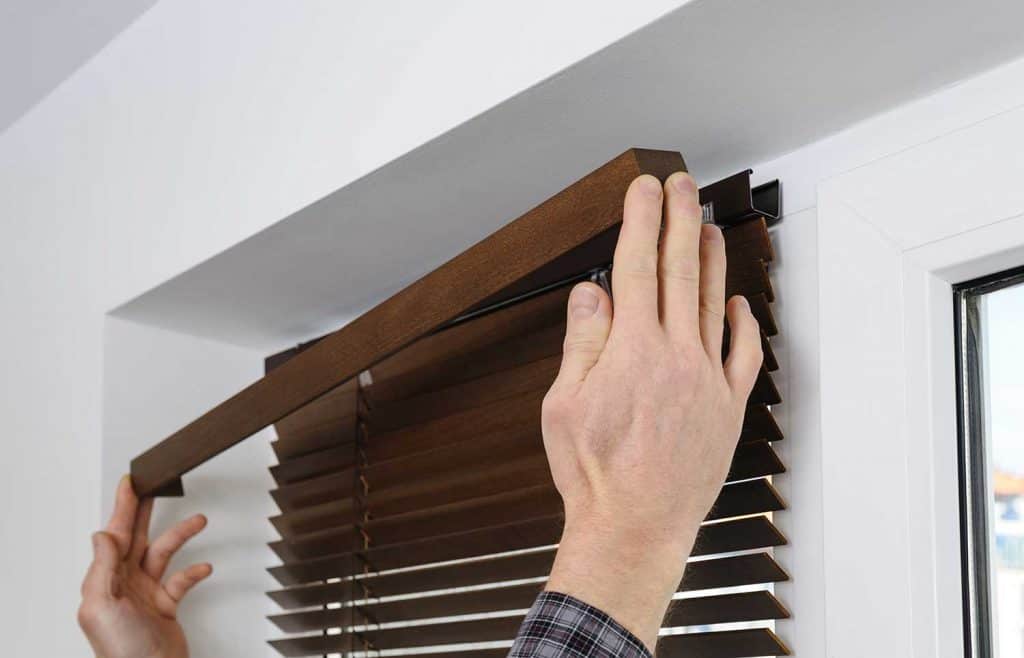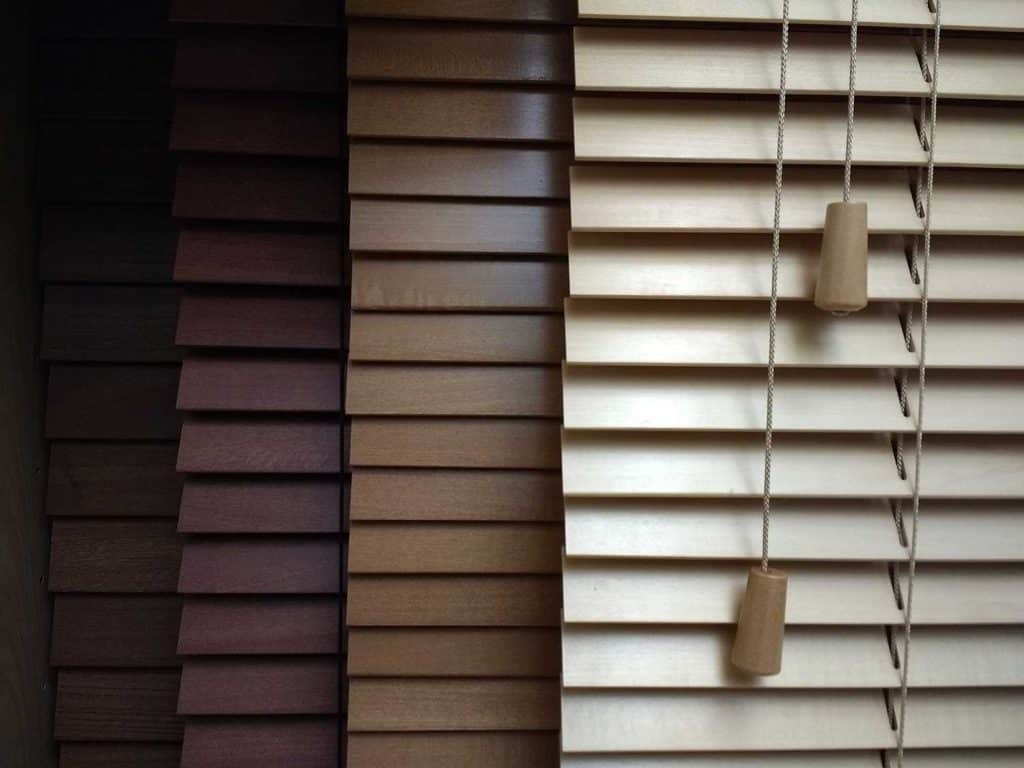Getting accurate measurements for your blinds is an important step that will ensure a proper window fitting. Measuring your windows is actually easier than most people may think. It can typically be done within a matter of minutes. So how exactly do you measure for blinds? We've done the research to bring you the answer.
The process for measuring inside mount blinds and outside mount blinds in your house is a bit different. Below is an overview of the steps for each.
How to measure inside mount blinds:
1. Measure the depth of the window 2. Measure the height of the window 3. Measure the width of the window 4. Double-check your measurements
How to measure outside mount blinds:
1. Measure the length of the window 2. Measure the width of the window 3. Determine the headrail location 4. Measure the bottom of the window 5. Double-check your measurements
In this post, we'll walk through all of the steps needed to accurately measure your windows for the best blind fitting. We'll also cover the standard blind sizes, how to choose the right blinds, and more. So stick around and keep reading.
![An adjustments of room lighting range through the blinds, How To Measure For Blinds [4 Things to keep in mind]](https://homedecorbliss.com/wp-content/uploads/2020/12/How-To-Measure-For-Blinds.jpg)
The Mounting Setup

We may include affiliate links and curated AI content to highlight top design styles.
Before measuring your windows for your blinds, you will first need to determine if your blinds will be mounted from the inside or the outside. This is a key factor in determining how you will measure the windows and what type of window you need to order or purchase. Below we've provided a brief overview of each type of mounting setup.
Inside Mount Blinds
Inside mounted blinds are installed within the window casing or frame. When measuring for this type of setup, follow the steps below:
1. Measure the depth of the window
Grab your tape measure and measure the distance between the edge of the window frame and the windowpane (the depth of the window). Be sure to measure this distance carefully as this will be used to ensure that the window meets the minimum requirements by most blind manufacturers for an inside mount. Measure down to the nearest eighth of an inch.
2. Measure the height of the window
Next, use your tape measure to get measurements of the bottom, top, and middle of the window's opening. Be sure that the tape measure is placed exactly at the top of the side of the glass to ensure accurate measurements. Measure once on the right side of the window, in the middle, and then on the left side. Afterward, use the longest of the three measurements.
3. Measure the width of the window
Measure the width of your window from the edge of the window pane to the other side. You want to measure it in three places: the center, left, and right. If you are installing vertical blinds, you'll want to use the smallest measurement. Otherwise, use the longest measurement. When ordering your blinds, use the exact size without rounding up or down. When the blinds are designed, the manufacturer will usually take the deductions as needed.
4. Double-check your measurements
It's always recommended that you double-check your measurements, or measure each area twice to ensure accuracy.
How To Measure Outside Mount Blinds
Outside mounted blinds are installed outside of the window casing or frame. When measuring for this type of setup, follow the steps below:
1. Measure the length of the window
Take a tape measure and measure the space above your window to assure that you have at least 2 inches of space on the wall or the molding above the window (it should be flat space). It's always best to round down to the nearest eighth of an inch.
Check out this tape measure on Amazon.
2. Measure the width of the window
Next, you need to measure the width of your windows to determine the area that will be covered. A good rule of thumb is to have at least an inch and a half of extra space on both sides of the window. Having the extra space in width can offer you complete coverage as well as have more privacy once the blinds are installed.
3. Determine the headrail location
Now it's time to determine where you want your headrail to be on the window. The headrail is the big bar located at the top of the blind that houses all of the blind's operational components. It can also be installed on the molding (if there is enough space) or on the wall. Place a mark on the wall or molding where you want your headrail to be.
4. Measure the bottom of the window
Next, measure the height of all of the windows, starting at the mark that you just made. This measurement will determine how long your blinds should be. So if you want them to extend below the sill, be sure to measure for this. If your window sill significantly protrudes from the window, you should measure the blinds to meet at the sill as opposed to below it.
Before measuring the windows for the blinds, clear them of any obstructions (such as decorations, plants, or pet dishes) as well as account for any obstructions such as brackets, molding, or doorknobs.
5. Double-check your measurements
It's always recommended that you double-check your measurements, or measure each area twice to ensure accuracy.
Quick Tips:
If your windows don't fit the standard measurements for blinds, you can typically buy a blind of a longer length or width and trim it down at home.
Also, if your windows have irregular sizes or shapes, you can simply contact a window installer to have them recommend the best way to take measurements or the best type of blinds to buy.
What Are The Standard Blinds Sizes?
American blind sizes come in a wide range to ensure easy fitting for most home, commercial, and apartment windows. Below are the standard widths and lengths for most store-bought blinds.
Standard Widths:
- 24 inches
- 36 inches
- 48 inches
- 60 inches
Standard Lengths:
- 36 inches
- 48 inches
- 60 inches
- 72 inches
Do Blinds Have To Fit Exactly?
Blinds do need to have an exact fit to be installed properly on a window if they are inside-mounted blinds. If they are too long or too short, they simply won't fit inside the window frame. Outside-mounted blinds, however, have a bit more wiggle room to be a little longer, as they will typically be wider than the window anyway.
How Do You Choose Window Blinds?

Before deciding on the type of blinds that you want for your home or apartment, there are a few factors that you should consider that can help you make the best decision. Let's take a look at some of them.
Privacy & Natural Lighting
Blinds can offer a significant amount of privacy for your home, especially when they are drawn. If you prefer to block the views of nosy neighbors or potential criminals, you may want to look at dark-colored blinds or ones that offer additional privacy.
If you prefer to have a bit of natural sunlight coming into your home, blinds that are light-colored or allow some sunlight while they're closed may be better suited than darker blinds or vertical sliding blinds.
Check out these blackout blinds on Amazon.
Safety
Safety is often an overlooked factor when it comes to purchasing blinds. If you have small children in your home, you may want to look at cordless blinds. Cords can pose a safety hazard (because of the potential choking risk) for young children.
Check out these cordless blinds on Amazon.
Budget
Blinds are available for a wide range of budgets. It's best to first determine how many windows you will need blinds for, and then come up with the type of blind that each window will contain. You should always expect larger window treatments, fabrics, or specialty patterns to be more expensive.
Check out these low-priced cellular blinds on Amazon.
Cleaning
While blinds don't require professional cleaning, they tend to attract dust rather easily. Fabric and cloth blinds may hide dust better, typically making them harder to clean. Solid-surface blinds will usually become dustier faster; however, they can be cleaned fairly easily with a duster or a quick wipe down with a dry microfiber cloth.
Check out this duster kit on Amazon.
Design Preference
Blinds can definitely add to the decor of your home. Bold colors such as reds or blues can liven up a room and make it more appealing. Earth tones or neutral colors can make a room appear more traditional, creating a relaxing environment. Today, you can find blinds in almost any color. And even if you can't, you can usually have them custom-made.
Check out these earth tone wood blinds on Amazon.
For more guidance on window blinds, check out our article: Should Window Blinds Match Wall Color?
Which Is Better: Inside Or Outside Mount Blinds?
Neither window treatment is necessarily better than the other. However, they both have their advantages and disadvantages. Let's take a look at some of the reasons why you may choose one over the other.
Why Choose Inside Mount Window Blinds
Inside mount blinds are pretty much the standard in most American homes. Let's take a look at why.
These blinds offer a subtle and clean look, which works great if you are going for minimalist decor. They also take up less space than outside-mounted blinds, allowing more room for decorative items on the windowsill.
Inside mount blinds are ideal if you are looking to have layered window treatments. For example, if you are looking to have two sets of curtains covering the blinds, positioning them won't be an issue because the brackets won't be in the way--as they would if they were mounted on the outside.
They are also a good choice if you're looking to show off any fancy woodwork on your windows, such as beautiful stains, decorative etches, or intricately designed woodwork. On the other hand, outside-mounted blinds would cover the wood.
It's important to note that inside mount blinds will only work for windows that are deep enough to house them.
Why Choose Outside Mount Window Blinds
While outside mounted blinds are less common than inside mount blinds, they do come with their own set of advantages as well.
If you are looking to establish more privacy with your window or just prefer to keep some rooms in the house darker, outside mount blinds can block out all natural light from the window. Outside mounted blinds are all so advantageous if you have windows that are on the shallow side. Being that the blinds for outside mounts can completely cover the window, they can make the window appear much bigger than it actually is.
Wrapping Things Up
Getting accurate window measurements is the first step to ordering the perfect set of blinds. With the simple steps that we listed above, you'll be well on your way to a gorgeous set of new blinds. Before you go, be sure to check out some of our other posts:









